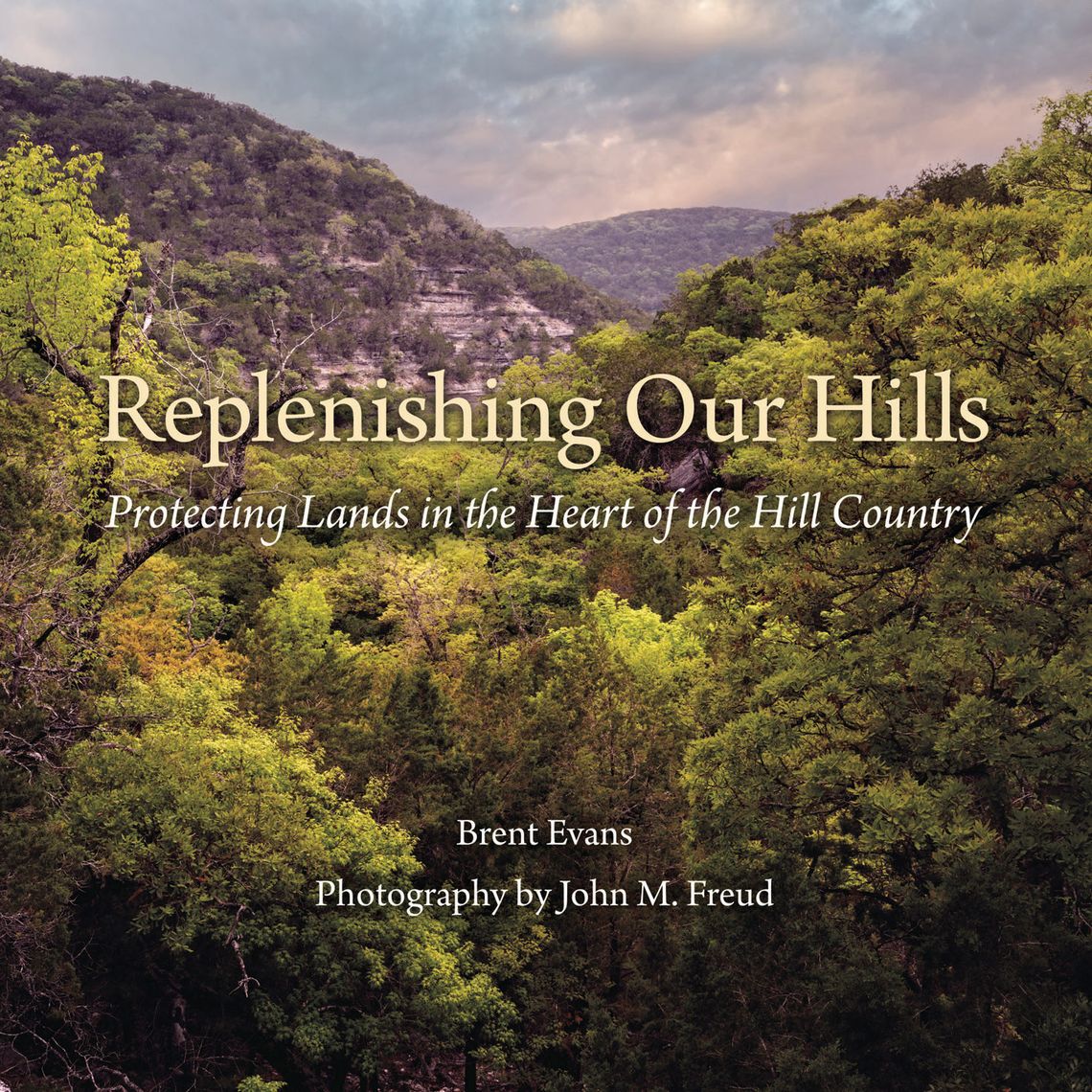Six years in the making, “Replenishing Our Hills: Protecting Lands in the Heart of the Hill Country” by Brent Evans and John Freud is an inspiring and informative table book tribute to the beauty of the Texas Hill Country and celebrates the grassroots conservation efforts of local landowners, governments and nonprofits.
Suzanne Scott, Texas State Director of The Nature Conservancy, illustrates its impact, stating, “ʻReplenishing Our Hills’ is like a Sunday drive along the winding Texas Hill Country roads with Brent sharing the twists and turns of conservation history through his writings, while John’s photographs capture the beauty of the incredible vistas and natural resources along the journey.
“For those of us who have loved the Hill County forever or for those who are new to the area,” Scott says, “the stories and images in this book serve as the perfect guide. Through its pages you will learn of the work of many to protect these cherished landscapes yet be reminded there is so much more to do.”
A balanced blend of history, storytelling, and art that demystifies conservation work, and simultaneously invites peaceful reflection while inspiring action, this book chooses to show and tell us how to be good stewards of the lands we love.
In celebration of the book's release, Evans and Freud are hosting a book-signing and reception from 5-7 p.m. Aug. 1 in the Hunke Gathering Hall at Herff Farm. The event is free to attend but requires an RSVP, at: cibolo. link/rsvp.
Here is an excerpt from the book, by Evans: “The most debated tree in the Hill Country is Mountain Cedar: Ashe Juniper. Popular misinformation about the cedar has often resulted in devastating damage. Elizabeth McGreevy has debunked these tall tales in “Wanted! Mountain Cedars Dead and Alive,” and describes the benefits of a well-managed cedar forest.
She documents that cedar is native and has thrived in the Hill Country historically. Cedars provide important habitat and nutrition for wildlife and, in some cases, are the only thing stopping rampant erosion. Cedar can benefit soils and springs.
Rather than over-clearing, landowners can employ selective cutting and pruning, encouraging more diversity without harming the soil and undergrowth.
Avoid clearing “old-growth” cedar and cedar on steep slopes, where it provides important wildlife habitat and vital erosion control.
Management can include strategic cutting and stacking cedar and steering clear of the native plants and trees that are desirable allies.
Your workers need training, or they might cut the old-growth cedar for posts and leave the debris scattered on the ground; then the baby cedars start growing in the slash and it becomes extremely difficult to cut them later.
Cedar piles can either be chipped and used for mulch, or heaped into tepee stacks that create a habitat for quail, turkey and all the little critters that create the food chain for the larger ones.
“Cedar sculpting” creates a different kind of wooded area, in which the lower branches are pruned and trimmed in a manner that produces a mature cedar forest with a taller canopy, and yet enough open area beneath for some shade-tolerant native grasses and brush to take hold, wildlife to thrive and space for humans to play.
Bill Kennon used this approach on the Malakopf Ranch, resulting in newly revived grasslands and miles of user-friendly trails.”
Courtesy photo









Comment
Comments